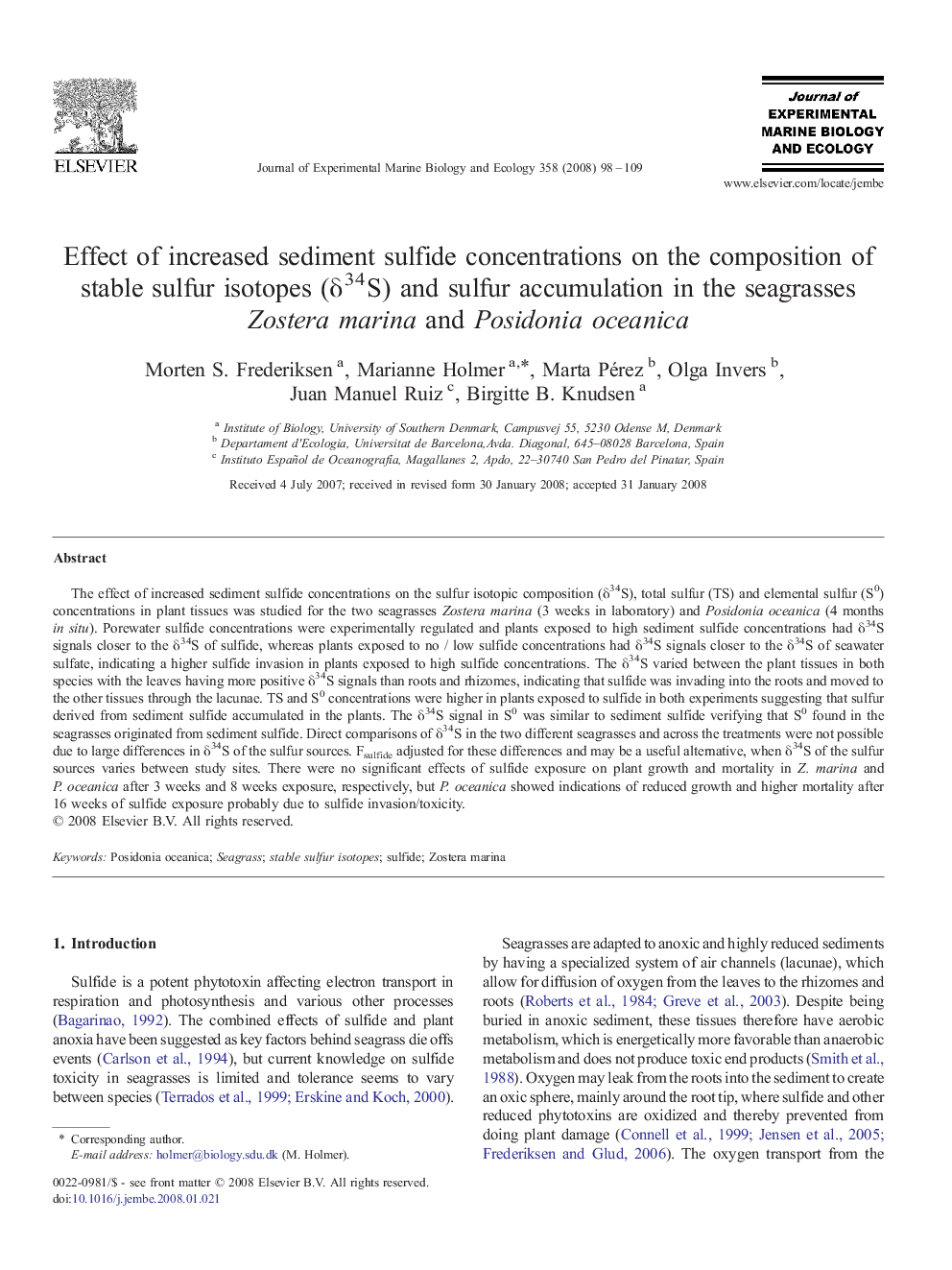| Article ID | Journal | Published Year | Pages | File Type |
|---|---|---|---|---|
| 4397440 | Journal of Experimental Marine Biology and Ecology | 2008 | 12 Pages |
The effect of increased sediment sulfide concentrations on the sulfur isotopic composition (δ34S), total sulfur (TS) and elemental sulfur (S0) concentrations in plant tissues was studied for the two seagrasses Zostera marina (3 weeks in laboratory) and Posidonia oceanica (4 months in situ). Porewater sulfide concentrations were experimentally regulated and plants exposed to high sediment sulfide concentrations had δ34S signals closer to the δ34S of sulfide, whereas plants exposed to no / low sulfide concentrations had δ34S signals closer to the δ34S of seawater sulfate, indicating a higher sulfide invasion in plants exposed to high sulfide concentrations. The δ34S varied between the plant tissues in both species with the leaves having more positive δ34S signals than roots and rhizomes, indicating that sulfide was invading into the roots and moved to the other tissues through the lacunae. TS and S0 concentrations were higher in plants exposed to sulfide in both experiments suggesting that sulfur derived from sediment sulfide accumulated in the plants. The δ34S signal in S0 was similar to sediment sulfide verifying that S0 found in the seagrasses originated from sediment sulfide. Direct comparisons of δ34S in the two different seagrasses and across the treatments were not possible due to large differences in δ34S of the sulfur sources. Fsulfide adjusted for these differences and may be a useful alternative, when δ34S of the sulfur sources varies between study sites. There were no significant effects of sulfide exposure on plant growth and mortality in Z. marina and P. oceanica after 3 weeks and 8 weeks exposure, respectively, but P. oceanica showed indications of reduced growth and higher mortality after 16 weeks of sulfide exposure probably due to sulfide invasion/toxicity.
